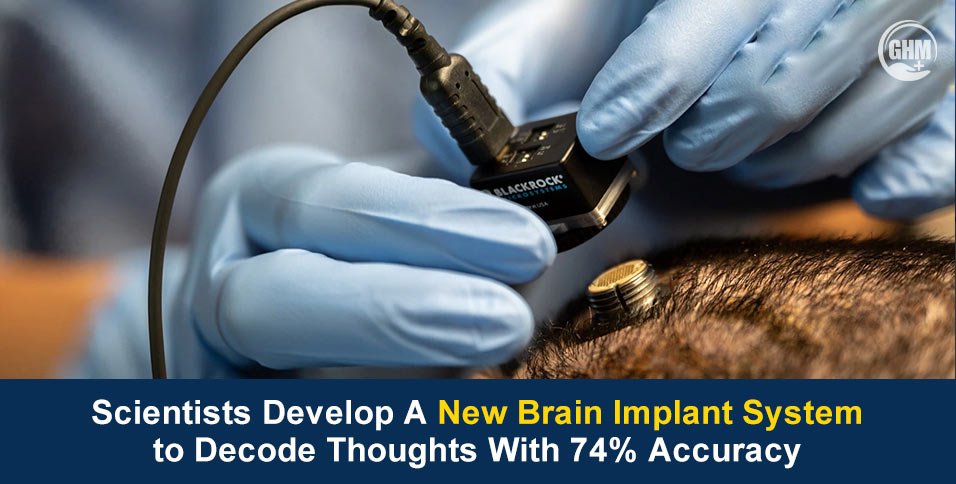Overview:
In a newly developed system that can translate our thoughts into text or sound, scientists are climbing new heights with technological advancements.
The new brain implant system is an inner speech decoder, developed by researchers across various U.S. institutions. The decoder hit an accuracy rate of up to 74 percent when tested on four paralysed volunteers.
This groundbreaking research in brain-computer interface (BCI) technology is giving new hope to people with conditions like paralysis, stroke, or other illnesses that rob them of their ability to communicate.
Let’s dive into the incredible device’s functioning and prospects,
- The Functions of the Mind-Reading Implant
The brain cells are messengers constantly firing and sending signals to each other. These signals control everything a human does, from wiggling their toes to forming words in their minds.
When they think about speaking, a specific pattern of these signals lights up in the part of their brain responsible for language.
- Listening to Brain Waves: The implant is made up of tiny sensors that are placed on the surface of the brain. These sensors can “listen” to the electrical activity of the brain cells.
- Decoding the Patterns: Special computer programs, called algorithms, are then used to analyze these brain signals. They learn to recognize the unique patterns that correspond to different sounds and words.
- Turning Thoughts into Speech: Once the computer understands what the person is trying to say, it can translate those signals into text or even synthesized speech through a connected device.
- Unique Factor Of The New Brain Implant System
This isn’t the first time scientists have tried to create brain-computer interfaces. However, this new technology shows significant improvements:
- More Natural Communication:
Previous attempts often involved users selecting words or letters on a screen using their thoughts. This new implant aims for a more fluid and natural form of communication, closer to how we speak normally.
- Decoding Complex Thoughts:
Researchers are improving the decoding of more complex sentences and ideas, not just simple words. This could allow for richer and more meaningful conversations.
- Potential for Wider Use:
While still in the early stages of research, the goal is to develop a system that is reliable, safe, and can eventually be used by a wider range of people who have lost the ability to speak.
- Life-Changing For Disabled Individuals:
This advancement in BCI technology has the potential to change many lives:
- Helping People with Disabilities:
For individuals who have lost the ability to speak due to conditions like stroke or paralysis, or who are mute by birth, this technology could provide a new way to communicate with their loved ones.
- Restoring Lost Functions:
BCIs are also being explored to help people control prosthetic limbs or even regain movement.
- Understanding the Brain:
By studying how the brain produces thoughts and language, researchers can gain a deeper understanding of the human mind itself.
This research offers a beacon of hope for those who have been longing to connect with the world around them through the power of language.
Future Possibilities
While this New Brain Implant System is incredibly promising, there’s still a lot of work to be done with the new brain implant. Researchers are continuing to refine the technology, improve accuracy, and make it more user-friendly. Clinical trials with more participants are needed to ensure its safety and effectiveness.
However, this groundbreaking achievement marks a huge step forward in the field of neurotechnology. It shows that the seemingly impossible decoding, turning thoughts into speech, might one day become a reality for those who need it most.
The future of communication for people with speech impairments looks brighter than ever, thanks to the incredible power of the human brain and the intelligence of science.
















